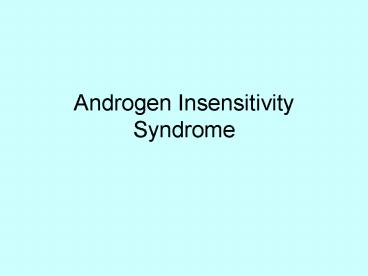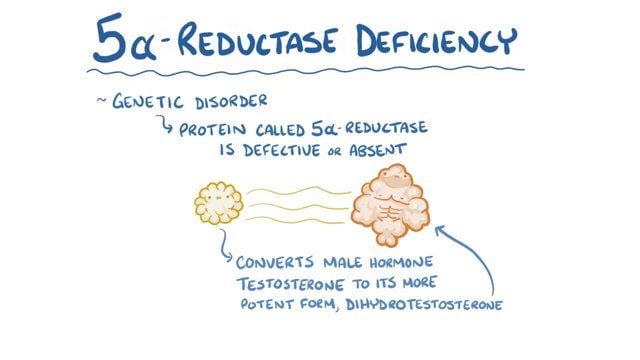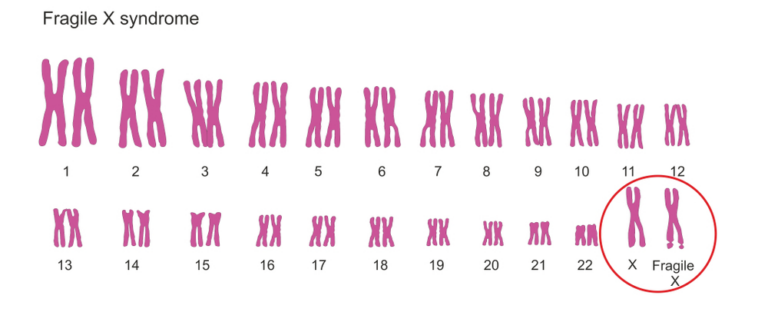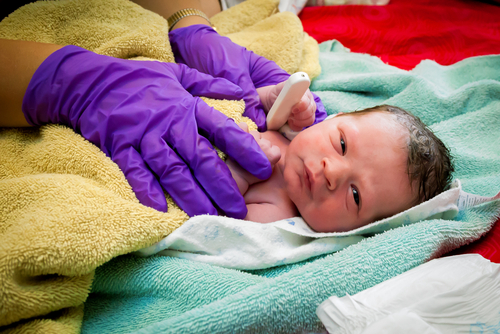When Genes Interfere: Navigating Reproductive Challenges in Androgen Insensitivity Syndrome
Androgen insensitivity syndrome (AIS) happens when an individual who is genetically male with an XY chromosome makeup is resistant to the male hormones (androgens). This results in the individual having the physical traits of a woman but the genetic composition of a man. Androgen insensitivity syndrome is a sex differentiation disorder. It was previously referred to as a testicular feminization syndrome. It affects the male fetuses in the uterus during development, as well as during sexual development in puberty.
Androgen insensitivity syndrome prevents male genitals from their proper development and almost always results in infertility in adulthood. Males that inherit an abnormal gene called the androgen receptor gene from their mothers have a 1 in 4 chance of developing the syndrome. Females can also inherit the gene, but they do not develop Androgen insensitivity syndrome.
What are the Types of Androgen Insensitivity Syndrome?
There are three types of Androgen insensitivity syndrome, they include:
- Complete androgen insensitivity (CAIS) – The external genitals of the affected individual appear female. However, they do not have any female reproductive organs like the uterus, ovaries, or fallopian tubes. Individuals with this syndrome are often raised as girls.
- Partial Androgen insensitivity syndrome (PAIS) – The person’s external genitalia is a bit ambiguous, not quite male or female. They are often raised as boys, but not always.
- Mild Androgen insensitivity syndrome (MAIS) – The individual’s external genitalia is male, but they are usually infertile. This is usually considered a type of partial Androgen insensitivity syndrome.

What is the Cause of Androgen Insensitivity Syndrome?
Androgen insensitivity syndrome results from an abnormal X-linked gene. This means that the gene is found on the X chromosome that is passed from the mother to the child. The gene cannot produce androgen receptors. These receptors are the cells that allow the body to respond to the influence of androgens like testosterone.
What are the Symptoms of Androgen Insensitivity Syndrome?
The prominent symptom across all types of the syndrome is infertility. Individuals with the syndrome will neither be able to conceive nor impregnate their partners. They will have the external genitalia of females but with none of the internal reproductive organs. In the case of PAIS or MAIS, it is very rare for them to make their partners pregnant. Even with a prominent or small penis, it is usually impossible, because sperm production is very low to non-existent. Some other signs of CAIS include:
- Taller than average height for a female especially during puberty
- Absence of menstrual cycles or periods (Amenorrhea)
- Narrow and shallow vagina
- Testicles present in the abdominal cavity or inguinal canal
- Little or no pubic and body hair during puberty
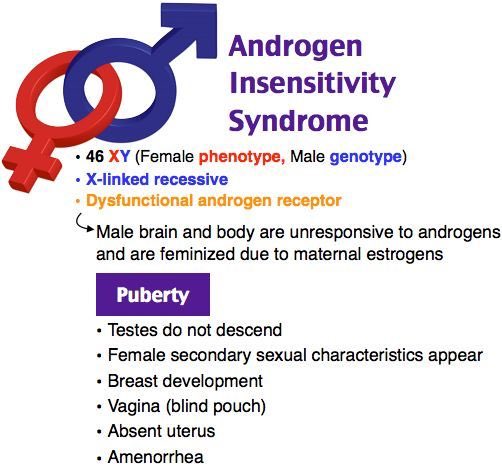
In PAIS, the following may be seen;
- Bifid scrotum
- Gynecomastia
- Clitoromegaly
- Hypospadias (presence of the urethral hole on the underside of the penis instead of the tip)
- Labial adhesions
- Micropenis
- Partially undescended testicles
In MAIS, the following are present:
- Sparse body hair
- Gynecomastia
- Micropenis
How is the Syndrome Diagnosed?
The initial diagnosis occurs because of the symptoms that are being experienced by the individual. In most cases, CAIS is usually not identified until the individual approaches puberty. The lack of body hair, normal breast tissue growth, and the total lack of menstrual periods will usually point the doctors in the direction of CAIS. The lack of menstrual periods may also lead to the identification of a lack of uterus through ultrasound or other means.
PAIS may be diagnosed much earlier; several tests may be done based on the ambiguity of the external genitalia. These may include chromosomal count, a karyotype test, or testing of the hormone levels. Also, a semen analysis may be done if the individual is already an adult. Other tests may include the biopsy of the gonads. In all the different types of Androgen insensitivity syndrome, the affected individuals will all have testes rather than ovaries. An investigation to find the mutation in the androgen receptor gene may also be done. However, while this may be appropriate for CAIS, it is not for PAIS. Only a fraction of the mutations that are responsible for PAIS have been identified to date.
What is the Treatment for Androgen Insensitivity Syndrome?
Individuals with CAIS usually do not need any treatment before puberty. The exception to this is if they have discomfort because of the testes or if they can be felt through the abdominal wall. The testes are usually removed after puberty. This is to reduce the risk of testicular cancer in adulthood by the individuals. They may need mental health support in reconciling their identity. They may also need to undergo procedures that will help in dilation of the vagina to increase its depth. The treatment for PAIS is more varied.
Previously, surgeries were done on these individuals to make their external genitals appear more feminine. Since it affected their ability to experience sexual satisfaction, it was stopped as the default treatment. The treatment done in PAIS is the same as in CAIS for individuals with female genitalia at birth. However, the testes may be removed before they attain puberty to prevent the fusion of the labia and the enlargement of the clitoris. The ones that have more of the male external genitalia are generally assigned and maintain a male gender identity. However, the testes are still removed later in life to prevent testicular cancer.
Individuals with Androgen insensitivity syndrome may also be administered hormone replacement therapy usually estrogen. This is because sex hormones play a part in numerous areas of health even bone health.
Living with Androgen Insensitivity Syndrome
Individuals with Androgen insensitivity syndrome generally have good physical outcomes. However, the syndrome has been associated with mental health or psychological problems. This is more obvious when trying to build a family but IVF and surrogacy are helpful in this regard. Just get in touch with a trustworthy medical travel agency for overseas medical treatment. Medical tourism is useful in this regard where expert diagnosis and treatments are unavailable locally.
Young people who have been diagnosed with Androgen insensitivity syndrome may be confused about their gender and sexual identity. They may also need support in understanding the complexity of sex and gender. They will also need help in dealing with their infertility. In some individuals, it could be shattering and devastating to learn that they would never be able to have biological children of their own. They may wonder if they can ever have successful relationships; it may even lead to them questioning their femininity or masculinity. These individuals will benefit from group therapy with people facing the same situation or others with permanent infertility. These support groups may help the individual adjust to their difficult but permanent reality.
The information provided in this blog is for educational purposes only and should not be considered as medical advice. It is not intended to replace professional medical consultation, diagnosis, or treatment. Always consult with a qualified healthcare provider before making any decisions regarding your health. Read more

